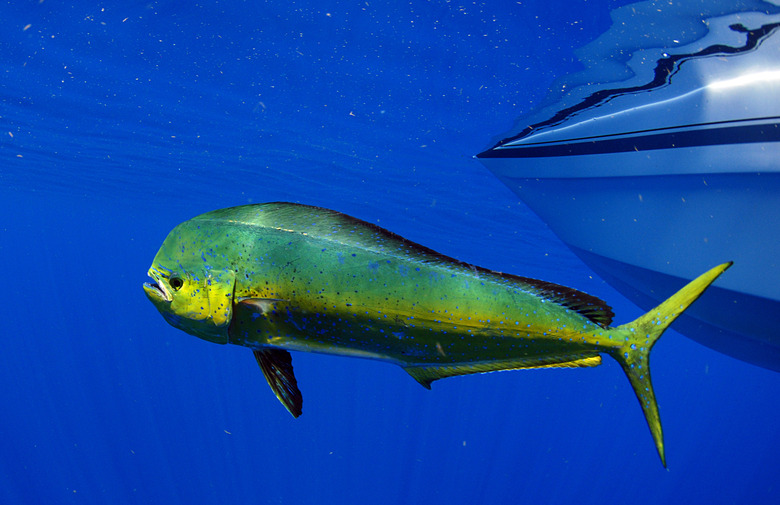Mahi Mahi Facts
Mahimahi's Hawaiian name (also spelled mahi-mahi and mahi mahi) means "strong-strong" (extra strong). The mahimahi also has many aliases—calitos, dorado, lampuka, maverikos, rakingo—and the common name dolphin-fish. Do not let that last misnomer alarm you. Mahimahi and flipper are not siblings, let alone cousins.
What Are They?
What Are They?
Mahimahi is not the marine mammal the bottlenose dolphin. They are not mammals at all. They are fish. More properly, mahimahi's scientific name is Coryphaena hippurus, one of the two members of the Coryphaenidae family.
Description
Description
With a sail-like dorsal fin extending nearly its entire length, a mahimahi's body is iridescent bluish-green and yellow. Its anal fins curve inward. Once a mahimahi leaves the water, it loses its bright colors and appears silvery.
Habitat
Habitat
Mahimahi live in the tropical and sub-tropical waters of the Hawaiian Islands. They also inhabit the Indonesian and Japanese archipelagos, and you will find them off the coasts of Central and South America, in the Red Sea and the Eastern Mediterranean.
Diet and Behavior
Diet and Behavior
With top speeds estimated at 50 nautical miles per hour, mahimahi move quickly under the water's surface. They prey on crab, squid and crustaceans and on fish like mackerel and flying fish.
Lifecycle
Lifecycle
Mahimahis grow quickly. They spawn frequently throughout the year in warm ocean currents. Their young mature among the seaweed. They have a life span of about 5 years.
Commercial and Recreational Fishing
Commercial and Recreational Fishing
More than half the world's commercial catch of mahimahi comes from Japan. Although their average weight is five pounds, mahimahi can reach 50 pounds. Much of the mahimahi catch makes it to tables in North America, but restaurants in countries like Australia and even Oman, on the Arabian Peninsula, put mahimahi on the menu.
Recreational anglers prize mahimahi for the battle to bring them into the boat. The mahimahi makes long runs, leaping out of the water and showing their colors. The largest catch with a rod and reel on record is an 87-pound specimen caught off the coast of Costa Rica in 1975.
Cooking and Eating
Cooking and Eating
Raw mahimahi fillet is whitish to pinkish colored. Cooke meat is off-white, moist and flakey. The flesh is less than 1 percent fat and adapts well to grilling and blackening. Mahimahi's flavor ranges from somewhat sweet in the lighter sections to less sweet and more swordfish-like in the darker portions.
Cite This Article
MLA
Griffin, Dana. "Mahi Mahi Facts" sciencing.com, https://www.sciencing.com/mahi-mahi-6525339/. 22 November 2019.
APA
Griffin, Dana. (2019, November 22). Mahi Mahi Facts. sciencing.com. Retrieved from https://www.sciencing.com/mahi-mahi-6525339/
Chicago
Griffin, Dana. Mahi Mahi Facts last modified March 24, 2022. https://www.sciencing.com/mahi-mahi-6525339/
